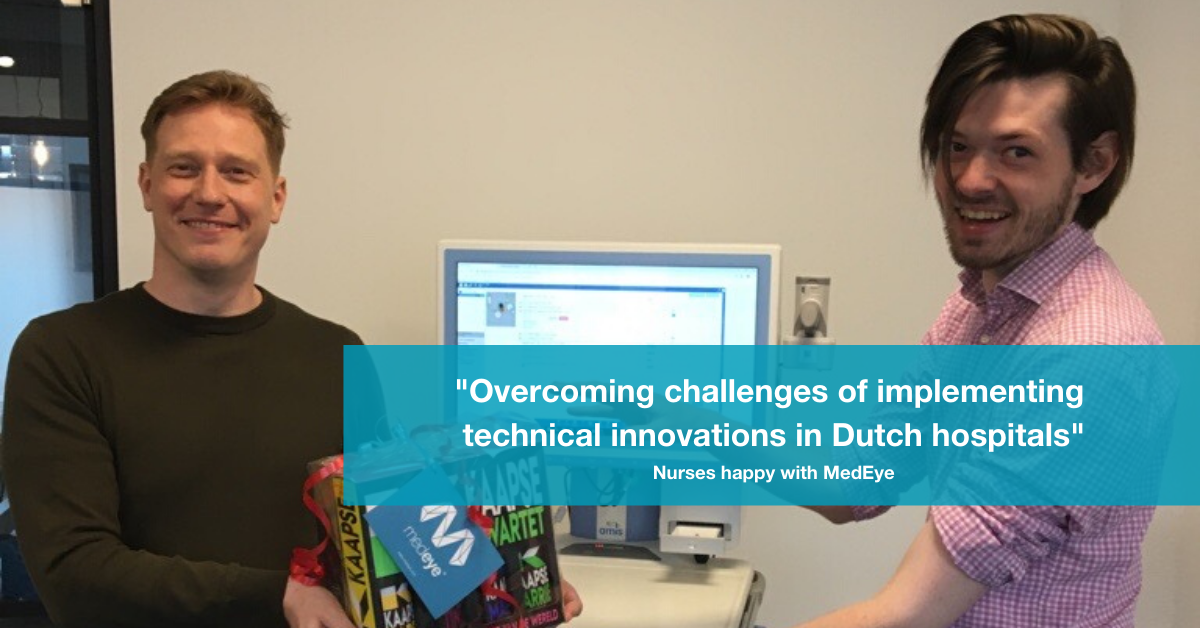The Belgium nursing Home (WZC) Heilig Hart has successfully implemented the digital medication verification system MedEye. The result? Improved medication safety, reduced administrative burden, and a noticeable increase in job satisfaction and confidence among healthcare staff. Both team coach Kim Deckmijn and the nursing and care staff speak highly of the collaboration and the impact on daily care.
Safety and efficiency as key drivers
The implementation of MedEye was driven by the desire to make medication administration safer and more efficient. “We noticed that errors were happening during medication rounds, but it was difficult to get a grip on them,” says Kim Deckmijn. “With MedEye, we gained that extra, legally required verification that is mandatory in Flanders.”
Nurses prepare and check the medication. Care assistants then scan the pouches and administer the medication. In case of an error message (red screen), a nurse is immediately called in.
A digital colleague in daily practice
For nurse Silke, MedEye has become an integral part of her workday: “I use MedEye, for example, with insulin or pain patches. That double-check the system provides gives me certainty that I’m administering the correct medication. The system is intuitive and saves time. Especially at night, it brings peace of mind, because I know I’m giving the right thing.”
She continues: “Previously, I had to manually check whether anything had changed in the multi dose medication packaging. Now MedEye signals this in advance, and we can process the changes calmly during the night shift. That makes my work mentally calmer and safer for the resident.”
Care assistant Daisy agrees: “In the past, we had to manually check everything, and there was often confusion due to brand substitutions. Now I just scan the pouches and immediately know if everything is correct. The system gives peace of mind. I feel more confident and efficient in my work.”
Tangible impact on the work floor
Beyond user-friendliness and efficiency, MedEye primarily offers more control and transparency:
Errors are detected and prevented more quickly, for example when the contents of an medication pouch do not match the prescription or when the wrong dosage is taken.
Care assistants are less burdened but remain actively involved. As Daisy describes it: “It’s as if you have a digital eye next to you. There’s no need to be afraid – it’s there to support you, not replace you.”
Residents are safer, as deviations are immediately flagged and staff receive a clear alert.
Careful implementation and close collaboration
Deckmijn emphasizes the importance of collaboration with all parties involved – MedEye, the Cevi/Feline prescribing system, and the supplying pharmacy GOED: “We had many meetings, and all parties did their utmost to make it workable. There was no ping-pong of responsibilities – there was genuine teamwork.”
The guidance during the rollout was also highly valued. Daisy: “We received a clear explanation beforehand, and again on the day itself. The system explained itself. Very user-friendly.”
Future vision: technology as a care partner
WZC Heilig Hart looks forward to the future with optimism. The center is open to further innovations and pilot projects. “Technology should not take over care, but support it,” says Deckmijn. “And MedEye is a wonderful example of that.”
Recommendation with conviction
When asked if they would recommend MedEye, the answer is unanimous: “100% yes,” says Deckmijn. “Everyone makes mistakes, MedEye helps us prevent them. You work more alertly and with greater confidence.” Nurse Silke adds: “You become more aware of what you’re doing. And that makes all the difference.”






